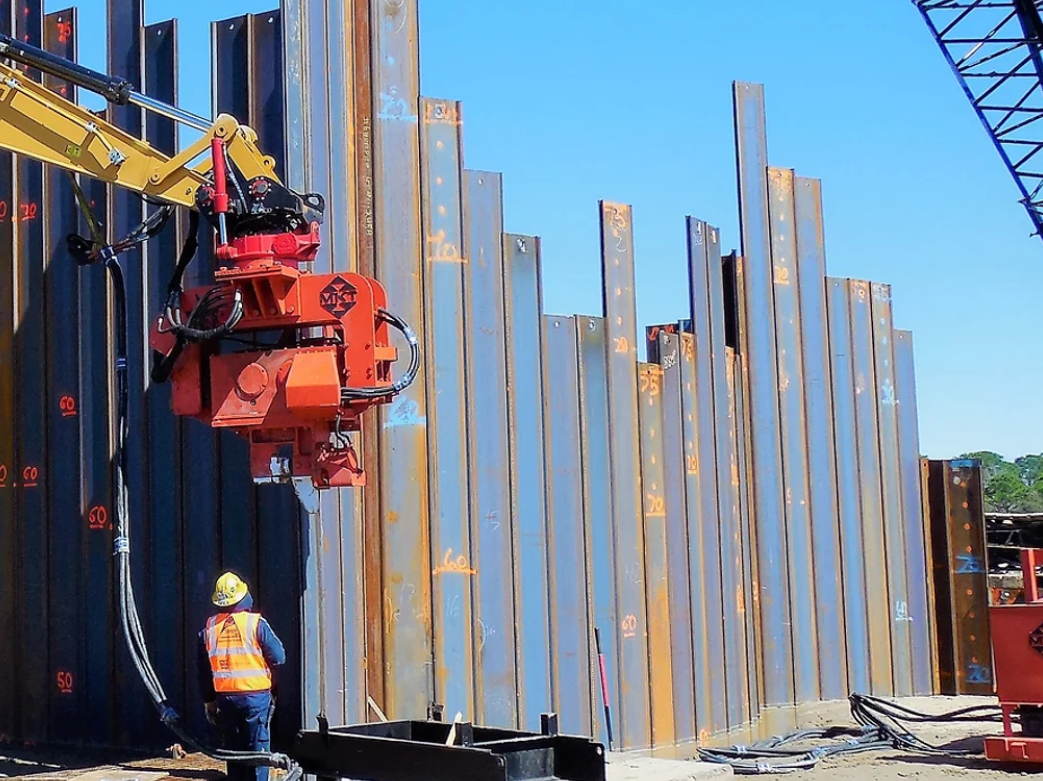The 2024 US Construction Outlook: Torrid or Tepid?
By KEN SIMONSON
Construction in the United States entered 2024 on a high note, with growth in all major segments. While some categories appear poised for further increases, the industry is unlikely to repeat its across-the-board gains.
The United States Census Bureau reported on Feb. 1 that construction spending in December 2023 climbed by 0.9 percent at a seasonally adjusted annual rate from November and by 14 percent from December 2022. (Seasonal adjustment is a statistical method to remove the variation due to regularly recurring differences between months, such as weather- or holiday-related patterns. Stating data at an annual rate allows ready comparison with full-year totals.)
These numbers are in current dollars – not adjusted for inflation – as no single deflator adjusts for spending on each type of project. Nevertheless, the year-over-year increase appears to be substantial even in real (econo-speak for inflation-adjusted) terms, especially given the recent rapid cooling of price increases.
The year-over-year gains were nearly universal across project types. Residential construction spending increased by 7 percent, as single-family homebuilding rose by 10 percent, while new multifamily construction grew by 12 percent, and improvements (additions and renovations) to owner-occupied housing edged up 2 percent.
Nonresidential construction spending rose by a more impressive 20 percent, almost evenly divided between private projects (up by 19 percent) and public investments (up by 22 percent). Moreover, all 16 of the categories the Census Bureau lists in its press releases posted increases.
The picture is likely to look quite different by the end of 2024, however, for both residential and some nonresidential categories. On the residential side, single-family spending looks strong, mainly in contrast to very weak figures for the first half of 2023. At the time, the shock of steep mortgage-interest increases made monthly payments too expensive for most first-time home buyers and caused “rate lock” for existing homeowners, who didn’t want to give up the low-rate mortgages on their current properties.
Mortgage rates stopped climbing in 2023 and appear relatively stable, albeit much higher than a few years ago. In addition, many builders now offer incentives – typically, a sum to bring down the interest rate – that have made new housing affordable for more purchasers. As a result, single-family homebuilding should post modest increases throughout 2024 compared to the same months in 2023.
The story is likely to be grimmer for multifamily construction. Spending topped out in August and stagnated for the rest of the year. Meanwhile, the number of units starting construction in December was 10 percent below the December 2022 level. Even more ominously, the number of permits issued for future units tumbled by 27 percent year-over-year.
Developers are being pinched by higher interest rates and tighter lending standards, which are pushing up costs, while rents are flattening or falling in many markets. This combination of factors implies that a double-digit decline in multifamily spending is likely in 2024.
These financing and rent squeezes are also affecting developers of nonresidential, income-dependent properties, especially offices. Many office tenants are still finding no more than half their workers returning to offices on average (though occupancy rates are higher midweek and lower on Mondays and Fridays). In response, firms are offering space for subleases and seeking less space as their leases expire. These factors have crushed demand for new office construction, which is likely to decline by double-digit percentages throughout 2024 and perhaps beyond.
Demand for warehouse space is rapidly softening from online vendors and retailers alike. Consumers are no longer increasing their online purchases as steeply as before. With the return of smoothly flowing supply chains, retailers are more confident they can receive needed deliveries “just in time” and don’t have to stockpile as many items “just in case.” As a result, warehouse construction spending peaked in August and fell by 9 percent over the following four months, ending the year lower than the December 2022 rate. Further slippage is likely in 2024.
The Census Bureau does not break out retail construction but does list spending for 11 types of stores, parking structures and drinking and dining establishments. Collectively, construction spending for these segments was virtually identical in December 2022 and December 2023, with little variation over the year. Retail construction is still occurring in conjunction with areas that are adding population or where people are working from remote locations. But retail activity is dwindling around now-underused offices and in neighborhoods with shrinking populations. These trends likely mean retail construction will remain spotty in 2024.
However, there should be sufficient demand for other nonresidential structures to outweigh these negative or doubtful segments. The largest and fastest-growing category in 2023, by far, was manufacturing construction, which soared by $81 billion, or 61 percent, from December 2022 to December 2023. Nearly $68 billion of this increase came from the subcategory the Census Bureau labels as “computer/electronic/electrical manufacturing.” That covers numerous semiconductor-fabrication plants, or “fabs.” Factories in Arizona, Texas and Ohio that broke ground before 2022 are still under construction. Plants in Kansas, Idaho and Utah have joined them.
In addition, several electric-vehicle, EV-battery and EV-component plants are under construction or will be in 2024. Other manufacturers are starting or adding factories in the US to escape actual or potential conflict areas, shorten supply chains, qualify for orders from projects that require US-made materials and components or serve new markets, such as hydrogen-fuel production and carbon capture and storage. For these reasons, manufacturing construction is likely to increase again in 2024.
Power construction constitutes another large and fast-growing market. Spending in December topped the year-earlier rate by 24 percent. Growth is occurring in solar and onshore wind generation, transmission lines in a few regions and utility-scale batteries to store power until needed. However, one type of power construction that previously appeared to be poised for rapid growth is not likely to contribute much in 2024: offshore wind. Numerous projects have been canceled or are running into vexing financial, logistical and regulatory barriers. These issues also affect all energy projects to varying degrees, rendering the timing and magnitude of power investments in 2024 uncertain.
Demand for data centers is seemingly boundless, making data-center construction a perennially hot market. The strong interest in artificial intelligence, particularly generative AI, seems sure to add to the demand for data centers for years to come. Unfortunately, the Census Bureau does not break out data-center spending but reports it as part of office construction. Thus, it’s impossible to quantify the degree to which data-center spending has increased or actual office construction has (presumably) decreased.
An increasing number of “traditional” data-center markets, notably northern Virginia’s, are now facing constraints on available electricity and opposition from nearby residents. Rather than slowing overall construction, however, these stumbling blocks have led owners to seek more diverse locations for their data centers.
As was the case in 2023, spending on public projects appears likely to increase at roughly the same rate as private construction. The largest public segment, highway and street construction, jumped by 26 percent. Other infrastructure categories also posted gains. Public spending on transportation facilities, such as airports, transit and passenger rail, rose by 9 percent. Sewage and waste-disposal spending climbed by 23 percent. Water-supply projects increased by 20 percent. Spending on conservation and development, mainly rivers and harbors, rose by 22 percent.
Some of the funding for these projects came from the trillion-dollar federal Infrastructure Investment and Jobs Act, which became law in November 2021. However, little of the increase in highway spending seems to be traceable to that law; few contractors report winning, or even having an opportunity so far to bid on, projects entailing IIJA money.
There are still uncertainties about the applicability of regulatory strings attached to IIJA funding. Besides the “Buy America” requirements for materials, there are new rules regarding apprenticeship programs and pay rates. Nonetheless, IIJA funds should boost spending in 2024 in each of these categories.
Two segments that are divided between public and private spending have mixed prospects in 2024: education and medical construction. About two-thirds of spending on educational structures is for primary and secondary schools, overwhelmingly funded through property taxes and administered by local school districts. In contrast, the private sector accounts for roughly one-third of college and university construction spending, much of which is raised through charitable contributions as well as tuition and student fees.
The Census Bureau reports on three categories of healthcare construction: hospitals, medical buildings such as doctors’ offices and special-care facilities such as clinics. About three-fourths of their funding comes from private entities, although they often receive some of it from public agencies.
Total healthcare construction outlays increased by 14 percent from December 2022 to December 2023: 13 percent for hospitals, 19 percent for medical buildings and 2 percent for special care. However, these totals probably reflect the rebound from the first year of the pandemic, when hospitals suspended construction to concentrate on treating influxes of COVID patients, while many temporary facilities sprang up for diagnosis and treatment. Now hospitals are resuming construction, and special-care facilities are closing down.
Over the medium-to-long term, more care will likely be delivered in offices and other facilities outside of hospitals, and the number of hospitals will continue to shrink. However, it is unclear if these trends will show up in construction spending as early as 2024.
Finding qualified workers to construct all of these projects remains the number-one challenge for many contractors. There were 374,000 unfilled jobs in construction at the end of December, according to the U.S. Bureau of Labor Statistics. That greatly exceeded the 227,000 positions the industry was able to fill during the entire month, implying that contractors wanted to hire more than twice as many workers as they were able to bring on board.
Another implication of the worker shortfall is that firms will have to pay more to attract and retain employees. Indeed, a wage series that tracks pay to hourly craft workers, called average hourly earnings for production and nonsupervisory employees, has risen at a steady 5-to-6-percent pace for the past two years, while AHE for the overall private sector cooled from a 6.5-percent annual rate of increase in July 2022 to 4.3 percent as of January. For 2024, it appears likely that this measure of wages will rise between 5 percent and 7 percent.
The industry enjoyed a respite in 2023 from previous steep price increases for many materials. After rising at a 20-percent or greater annual rate for 12 months in a row from mid-2021 to mid-2022, the Producer Price Index for materials and services used in new nonresidential construction actually declined for much of 2023. But some prices have continued to rise (concrete, for instance), while others (such as gypsum wallboard) are rising again. Year-over-year increases of 4 percent to 6 percent seem quite possible.
In summary, 2024 will likely bring growth overall for the US construction industry, but with major shifts in demand. On the residential side, single-family homebuilding will increase at a modest or moderate rate, more than offsetting a steep decline in multifamily construction. Among nonresidential categories, the outlook is bleak for office and warehouse construction and iffy for retail and higher education. But these negatives will likely be outweighed by continuing strong growth in the construction of manufacturing plants, data centers, schools, infrastructure and power facilities. However, the timing of many projects remains murky. Meanwhile, worker shortages will persist, and both wages and materials costs will likely increase more than in 2023.ABOUT THE AUTHOR
Ken Simonson has been the chief economist of the Associated General Contractors of America since 2001. Fellow and past president of the National Association for Business Economics, Simonson holds an M.A. in economics from Northwestern University.
Fresh Content
Direct to Your Inbox

YOUR CONSTRUCTION VOICE IN ST. LOUIS AND BEYOND
Join CNR Magazine today as a Content Partner
As a CNR Content Partner, CNR Magazine promises to support you as you build, design and engineer projects not only in and around St. Louis, but also across the U.S. CNR is equipped and ready to deliver a dynamic digital experience paired with the top-notch, robust print coverage for which you’ve always known and respected the magazine.




